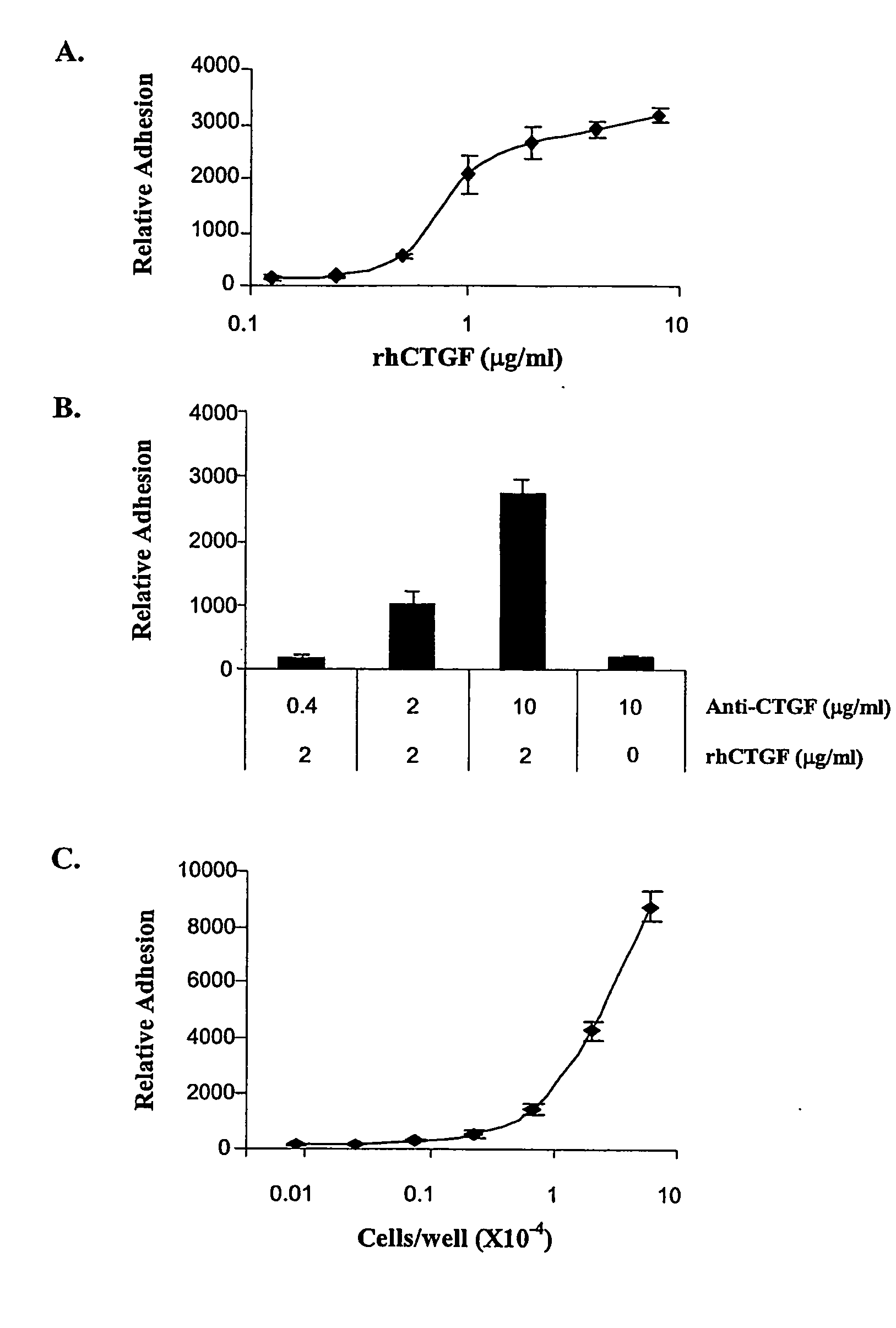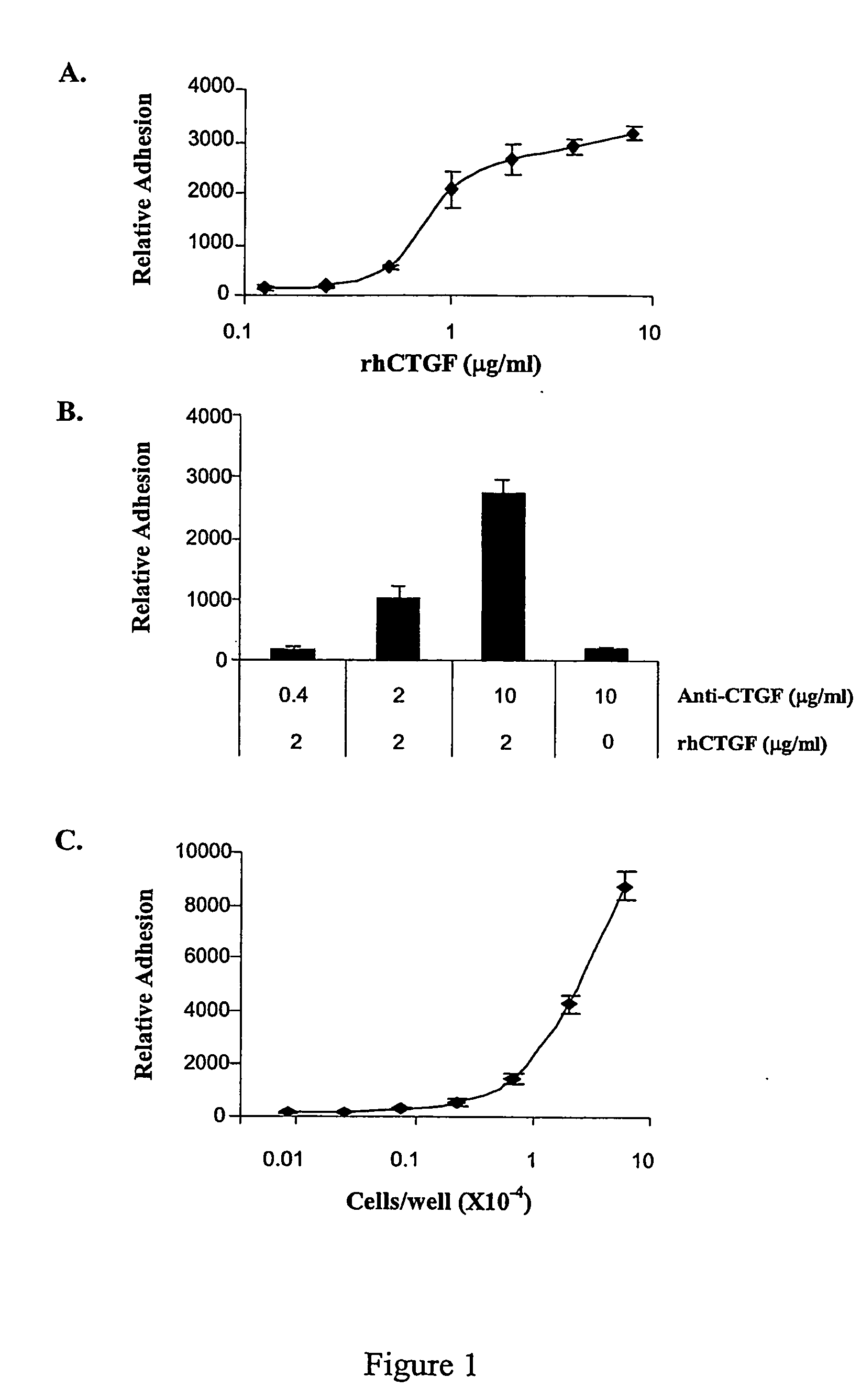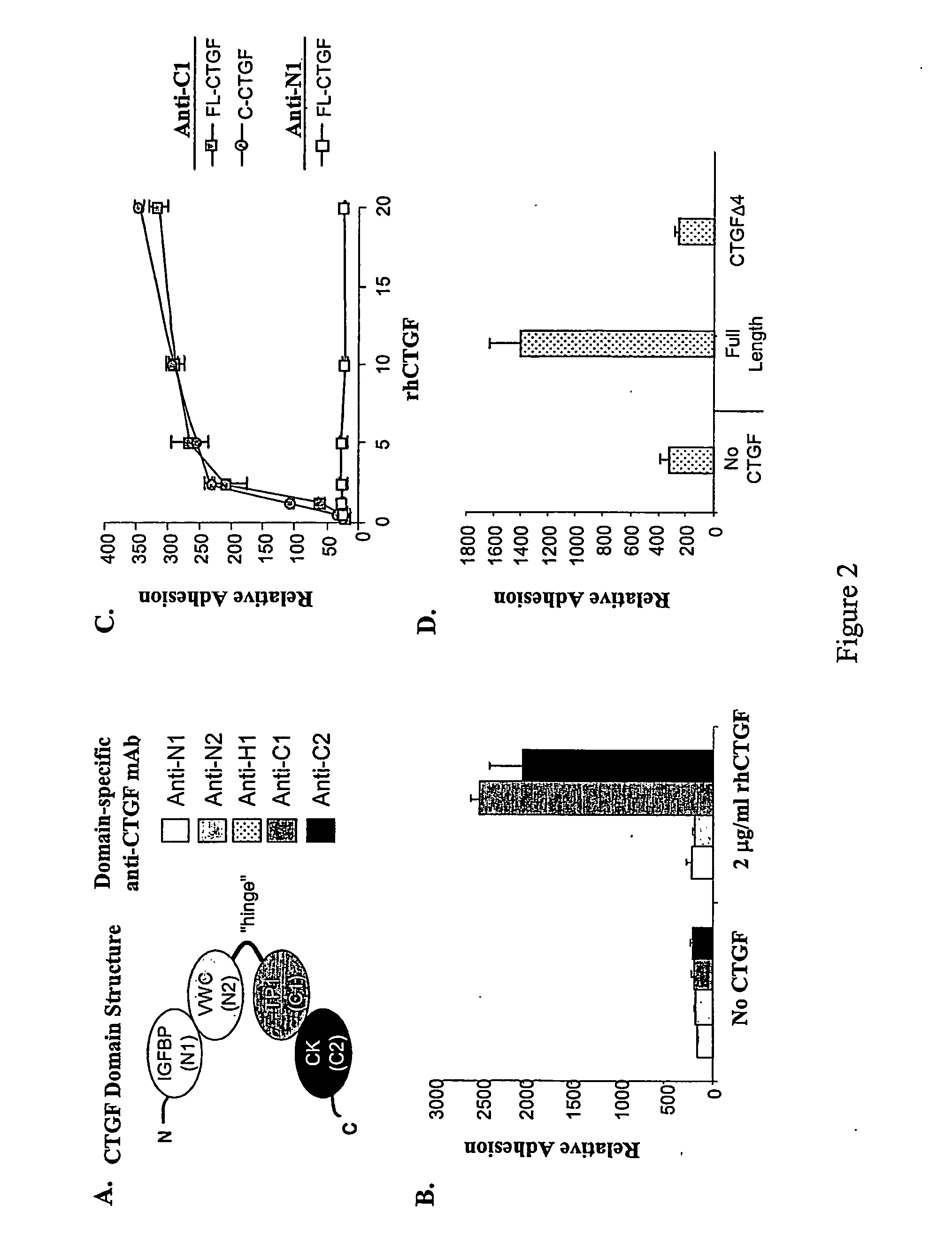Connective Tissue Growth Factor Signaling
a connective tissue and growth factor technology, applied in the field of growth factor signaling, can solve the problems of cell signaling modification, signaling pathway defect, etc., and achieve the effect of reducing the likelihood of developing a ctgf-associated disorder
- Summary
- Abstract
- Description
- Claims
- Application Information
AI Technical Summary
Benefits of technology
Problems solved by technology
Method used
Image
Examples
example 1
Production of Recombinant Human CTGF (rhCTGF)
[0071]A recombinant human CTGF baculovirus construct was produced as described in Segarini et al. (2001, J Biol Chem 276:40659-40667). Briefly, a CTGF cDNA comprising only the open reading frame was generated by PCR using DB60R32 (Bradham et al. (1991) J Cell Biol 114:1285-94) as template and the primers 5′ gctccgcccgcagtgggatccATGaccgccgcc 3′ and 5′ ggatccggatccTCAtgccatgtctccgta 3′, which add BamHI restriction enzyme sites to the ends of the amplified product. The native start and stop codons are indicated in capital letters.
[0072]The resulting amplified DNA fragment was digested with BamHI, purified by electrophoresis on an agarose gel, and subcloned directly into the BamHI site of the baculovirus PFASTBAC1 expression plasmid (Invitrogen Corp., Carlsbad Calif.). The sequence and orientation of the expression cassette was verified by DNA sequencing. The resulting CTGF expression cassette was then transferred to bacmid DNA by site-specif...
example 2
Anti-CTGF Monoclonal Antibodies
2.1 Antibody Production
[0076]Fully human monoclonal antibodies to human CTGF were prepared using HUMAB mouse strains HCo7, HCo12 and HCo7+HCo12 (Medarex, Inc., Princeton N.J.). Mice were immunized by up to 10 intraperitoneal (IP) or subcutaneous (Sc) injections of 25-50 mg recombinant human CTGF in complete Freund's adjuvant over a 24 week period. The immune response was monitored by retroorbital bleeds. Plasma was screened by ELISA (as described below), and mice with sufficient titers of anti-CTGF immunoglobulin were used for fusions. Mice were boosted intravenously with antigen 3 and 2 days before sacrifice and removal of the spleen.
[0077]Single cell suspensions of splenic lymphocytes from immunized mice were fused to one-fourth the number of P3×63-Ag8.653 nonsecreting mouse myeloma cells (American Type Culture Collection (ATCC), Manassas Va.) with 50% PEG (Sigma, St. Louis Mo.). Cells were plated at approximately 1×105 cells / well in flat bottom micr...
example 3
Assays
[0080]Methods for measuring cell adhesion mediated by CTGF are generally known to those skilled in the art. (See, e.g., Babic et al. (1999) Mol Cell Biol 19:2958-296; Ball et al. (2003) J Endocrinol 176:R1-7.) In some experiments, wells of a MAXISORP plate (Nunc Nalgene) were treated with 10 μg / ml recombinant human CTGF (rhCTGF) to directly adsorb CTGF to the well. Alternatively, wells were coated with a human monoclonal antibody specific for human CTGF, and then were blocked with bovine serum albumin to prevent non-specific binding. 2 μg / 1 ml rhCTGF or fragments thereof, or a vehicle control was added to each well. Plates were then washed 3 times with PBS, cells were added at a seed density of approximately 8×103 cells / well, and plates were incubated for 45 minutes at 37° C. Wells were then washed twice, and the number of cells retained in each well was measured using a CYQUANT cell proliferation assay kit (Molecular Probes, Inc., Eugene Oreg.). Alterna...
PUM
| Property | Measurement | Unit |
|---|---|---|
| temperature | aaaaa | aaaaa |
| pH | aaaaa | aaaaa |
| concentration | aaaaa | aaaaa |
Abstract
Description
Claims
Application Information
 Login to View More
Login to View More - R&D
- Intellectual Property
- Life Sciences
- Materials
- Tech Scout
- Unparalleled Data Quality
- Higher Quality Content
- 60% Fewer Hallucinations
Browse by: Latest US Patents, China's latest patents, Technical Efficacy Thesaurus, Application Domain, Technology Topic, Popular Technical Reports.
© 2025 PatSnap. All rights reserved.Legal|Privacy policy|Modern Slavery Act Transparency Statement|Sitemap|About US| Contact US: help@patsnap.com



